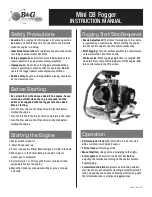
3-16
HYDRAULIC OILS FOR RT-300
AMBIENT TEMP:
-40
to 75
F -15
to 110
F
50
to 130
F
(40 to 24°C)
(26° to 43°C)
(10° to 54°C)
POUR POINT:
-40
F
MAX -15
F MAX
0
F
(-40°C
MAX) (-26°
C)
(-18°C)
VISCOSITY INDEX:
140 MIN
5 to 100
5 to 100
VISC. SSU@100
F:
200 MAX
230 MAX
40 MAX
(38°C)
SSU@210
F:
44 MIN
47 MIN
53 MIN
(99°C)
EXAMPLES:
MOBIL DTE-13
MOBIL AW-46
MOBIL AW-68
MOBIL
UNIV-ATF MOBIL
DTE-25
MOBIL
DTE-26
TEXACO TYPE F
CONOCO SUPER 46
CONOCO SUPER 68
TEXACO HD 46
TEXACO HD 68
OTHER REQUIREMENTS:
The oil must contain rust and oxidation inhibitor, and antifoam and antiwear agents and
must pass Vickers Vane Pump Test.
The RT-300 is factory filled with hydraulic oil for the -15
to 110
F (-26° to 43°C) range. If
significant portions of time are spent operating below 20
F (-7°C) or above 100
F (38°C),
the oil should be replaced with an extreme temperature oil. The fluid level in the reservoir
should be checked with all hydraulic cylinders retracted.
C A U T I O N
Never add kerosene or other "thinners" to hydraulic oil. These fluids have low
aniline points and consequently will cause rapid deterioration of certain packings
and seals in the hydraulic system.
C A U T I O N
Serious damage to the pump will result if it is run with the shutoff valves closed or
with insufficient oil level in the reservoir.
Observe the operation of the machine. If the oil is too cold, the machine will get sluggish
and should be warmed up further before sustained hard work is attempted. If the oil is too
hot, leakage will increase, pump efficiency will go down, system will lose pressure, and
moving parts will not be properly lubricated. Be certain machine is filled with the proper oil
for the prevailing operating temperature. If operating temperature is excessive, rapid
deterioration of the oil will result and moving parts and seals will wear more quickly. The
cause of the excess heat should be determined and corrected. Oil temperature should
never exceed 200
F (93°C).
Indications of an excessive operating temperature are:
1. Control handles become more difficult to operate.
2. Control handles stick instead of returning to neutral.
3. Excessive heat around valves and reservoir.
Summary of Contents for RT-300-2G
Page 6: ...1 2 DIMENSIONAL DATA Courtesy of Crane Market...
Page 7: ...1 3 RT 300 2G TURNING DIMENSIONS Courtesy of Crane Market...
Page 16: ...Courtesy of Crane Market...
Page 24: ...2 8 Courtesy of Crane Market...
Page 33: ...2 17 CAPACITY CHART FOR RT 300 2G Courtesy of Crane Market...
Page 34: ...2 18 CAPACITY CHART FOR RT 300 2G METRIC Courtesy of Crane Market...
Page 55: ...3 9 Courtesy of Crane Market...
Page 66: ...Courtesy of Crane Market...
Page 67: ...Courtesy of Crane Market...
Page 88: ...Courtesy of Crane Market...
Page 89: ...Powered by TCPDF www tcpdf org Courtesy of Crane Market...
















































